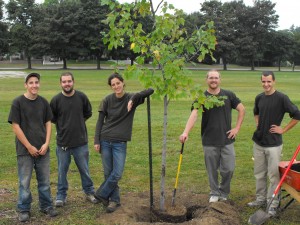When to plant vegetables is a question that novice gardeners wonder about. The answer depends on what type of vegetable is going to be grown and where the vegetable is going to be grown. Many gardeners base when to plant vegetables on the first or last frost date of the season, and this varies from one part of the country to another. Sowing seeds or transplanting seedlings also depends on whether the vegetable is a warm or cool season crop.
We can provide you with our full service gardening services. Contact our Toronto landscaping company to find out more. Here are some vegetables and their planting times:
Tomatoes
Most folks love tomatoes and gardeners love to grow them. Tomatoes are a warm season crop. There are hundreds of varieties, including heirloom varieties. Tomatoes can be enormous beefsteaks, plums, cherries and grapes. They can not only be the familiar red, but yellow, green, striped or even purple. They can also be started easily indoors from seed. They’re transplanted outdoors about two to four weeks after the last frost. In hot climates like Florida, they can be transplanted in the late winter.
Spinach
Spinach is a cool season crop and can stand light frosts and freezes. Spinach seeds can be sown as soon as the soil is workable and many gardeners sow seeds every 10 days or so, starting about four to six weeks before the last frost. Usually, spinach isn’t started indoors because transplanting spinach causes it to bolt or go to seed too quickly. There are some varieties of spinach that don’t mind warm weather, including New Zealand spinach. That’s probably because New Zealand spinach isn’t a spinach at all but tastes just like it.
 Peppers
Peppers
Peppers are a warm weather crop, but if they’re started indoors some gardeners subject them to cold treatment. When the first leaves appear on the plant, they lower the soil temperature to about 70 degrees F and make sure the plant gets 16 hours of light from a grow lamp. When the first mature leaf appears, they thin out the seedlings to 2 to 3 inches apart. When the third mature leaf appears, they move the plants to a spot where the night temperatures range between 53 to 55 degrees F and keep them there for a month. Then, they return the seedlings to a place where the average temperature is about 70 degrees F, then finally transplant them into the garden about two to three weeks after the very last frost. The soil temperature should be at least 55 to 60 degrees F when peppers are transplanted or they may go into shock.
